Quote:
Originally Posted by ardecila

I don't mean to imply that CTA is calcified or un-innovative; the rapid rollout of Bus/Train Tracker was revolutionary, especially with regard to the numerous ways to access the information (web portals, apps, LCD/LED screens, text service). BRT and Ventra will probably launch another revolution. It just seems odd that the railcar design has gotten so formulaic.
Forgive me if I am over-eager to import ideas from other cities; the 'L' network is unique among metro systems in a lot of not-so-obvious ways. I'm glad people like you and Mr. D have a sense of the big picture.
|
Mr. "a"..I know you will agree that everyone cannot be expected to like everything. Any particular design, no matter what its source was, will have its supporters and have an equal number who despise. To me, the glass front railcar is definately "not Chicago." But while I can appreceiate your personal lists of likes and dislikes, I must admit a personal disdain whenever I hear that the Chicago 'L' should change...just to change. No, no...you find what works, you refine it, you tweek, but you keep what works. That becomes your style, your tradition. I've ridden the European systems from Spain to London, Germany, Amsterdam, Paris. I have not found anything that could out perform or be as distinctive as our PCC 6000s from the day or our present HP rail cars. We don't need any doors on the outside or coupled trainsets with no bulkheads. Maybe I can better portray my viewpoint by sharing some of my personal photography of our CTA L/Subway.
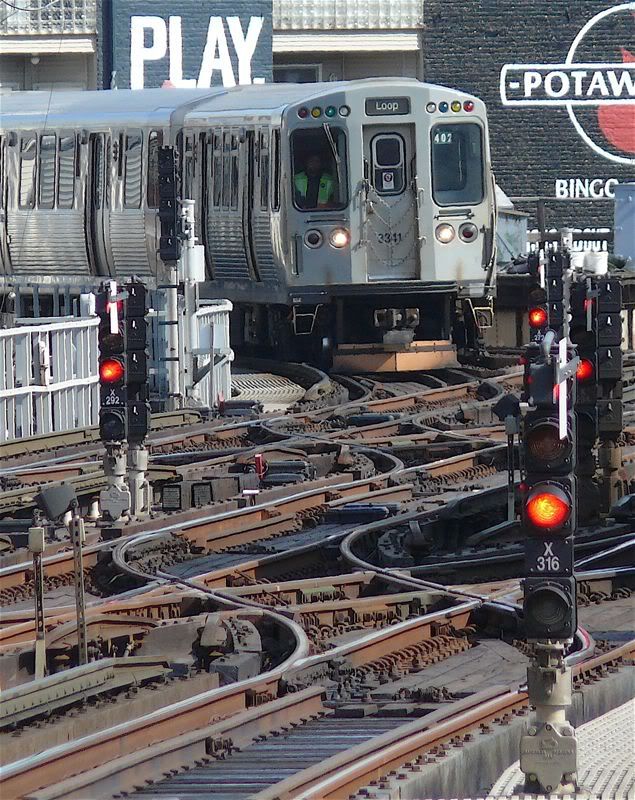
SB Brown Line coming off the branch at Clark Tower.
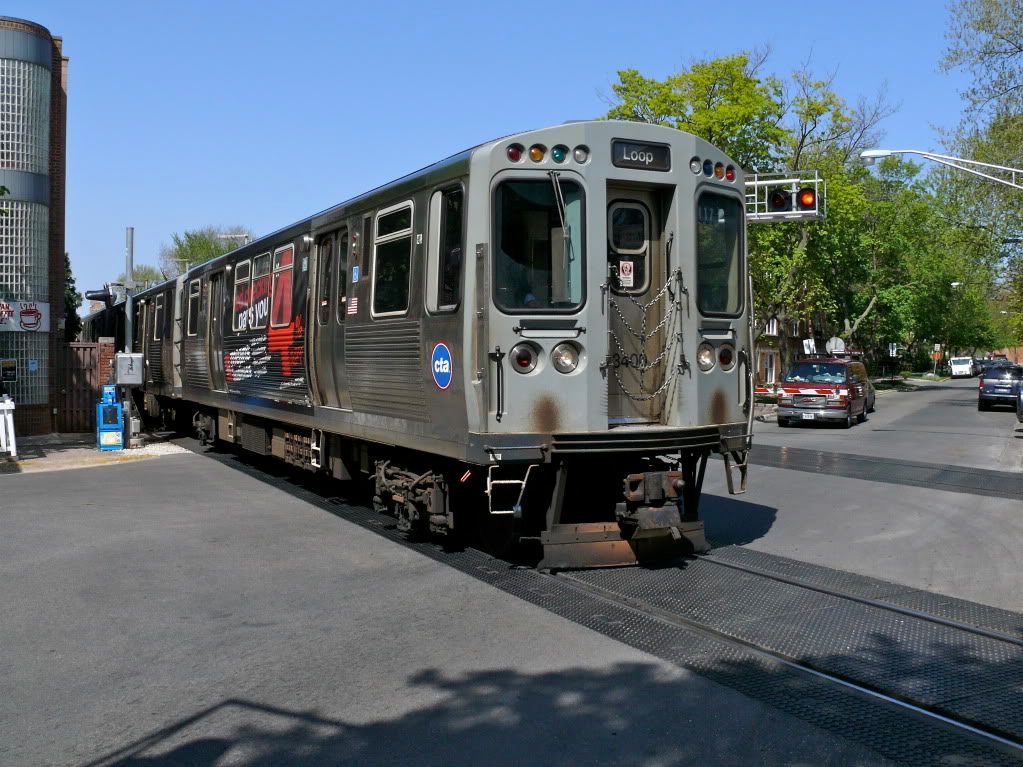
SB Brown Line crossing Francisco Ave. on the surface running portion of the line. The "L" was constructed even before streets were laid out. In fact the land was owned by officers of the elevated company.
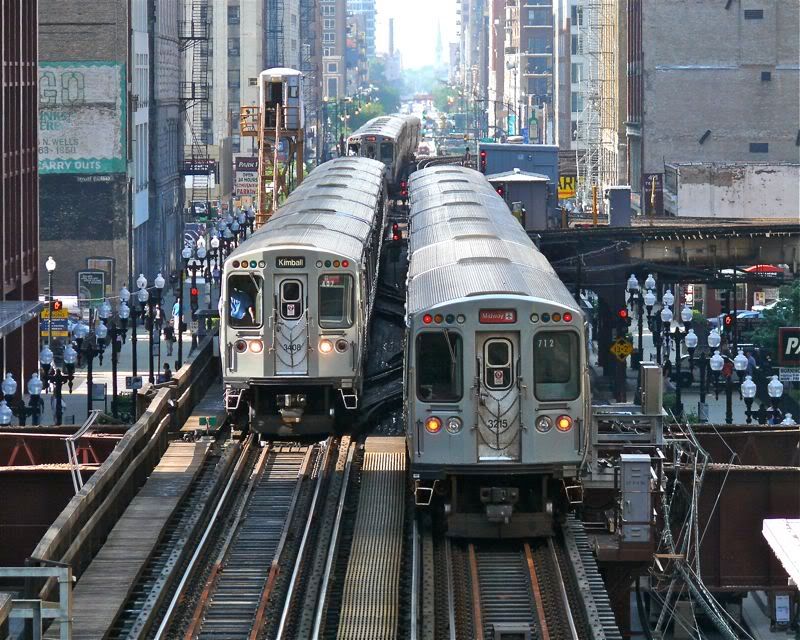
24 cars of 3200 series rail cars on the Wabash Ave. side of the Loop 'L'. The 'L' was a great fit on this wide street in the downtown area.
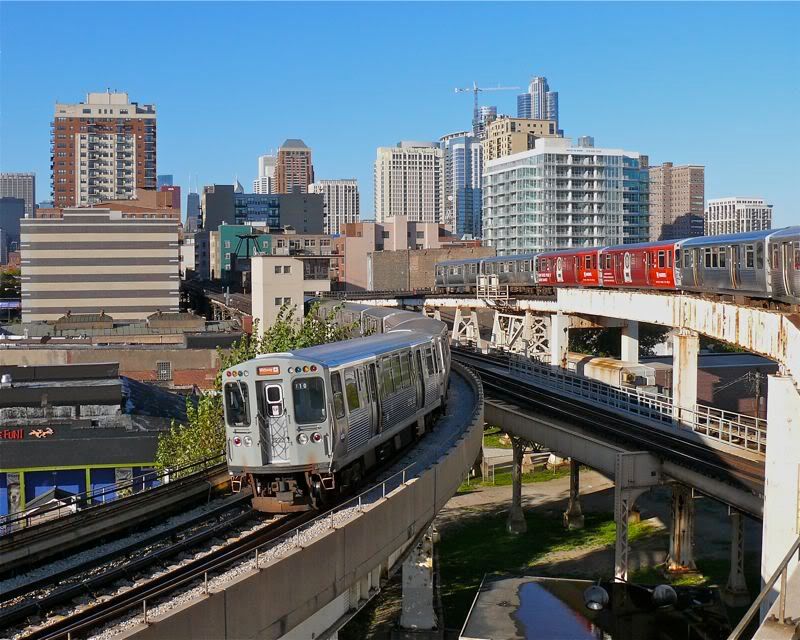
Inbound meets outbound as two Orange line trains go through the "fly-over" junction with the Green Line at 17th Street Junction.
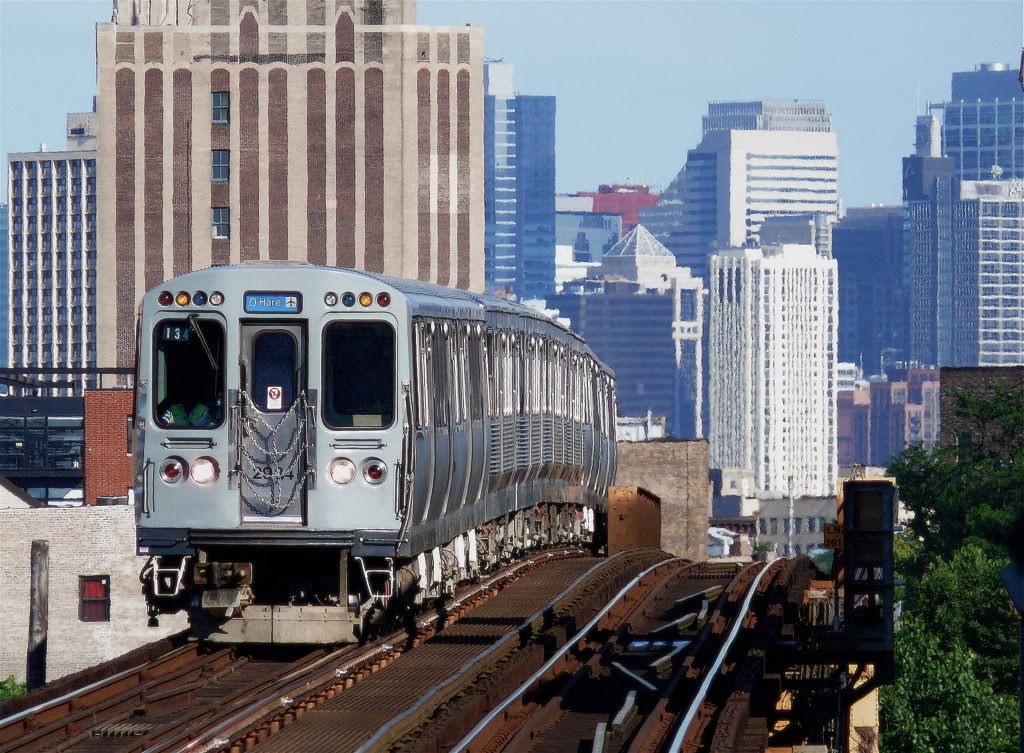
The telescope lens compresses a NB Blue Line train along Milwaukee Ave. with the city skyline four miles in the distance.

A NB Blue Line train stops at Damen Ave. station in a very busy and crowded area of the city.
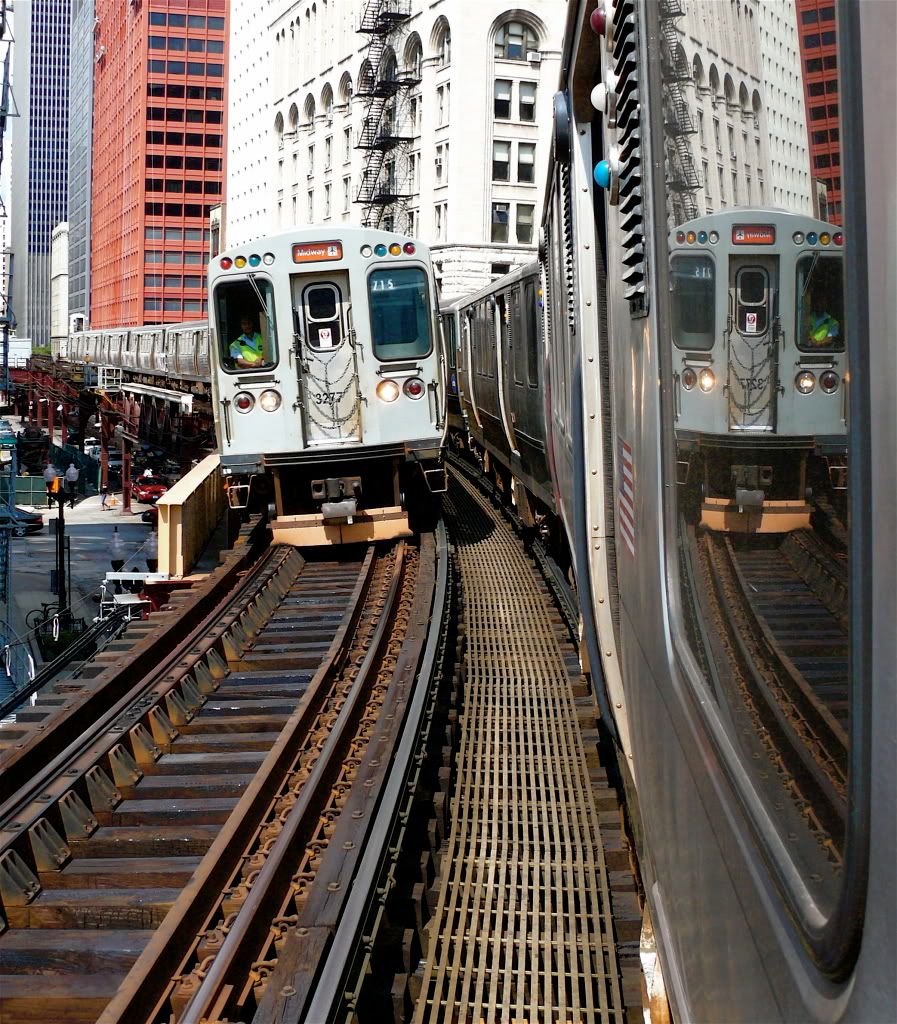
Two trains at the north end of the modern replacement of the original Harrison St. "S" curves. 6 MPH replaced by 35 MPH.
David Harrison



